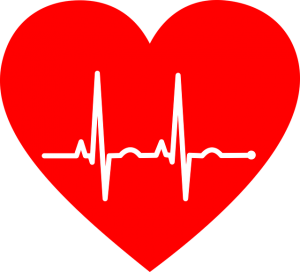(by Kirstin Fawcett)
Once viewed as a luxury, massage is increasingly recognized as an alternative medical treatment. According to a recent consumer survey sponsored by the American Massage Therapy Association, 77 percent of respondents said their primary reason for receiving a massage in the past year was medical or stress-related. Perhaps it’s not surprising, then, that medical centers nationwide now offer massage as a form of patient treatment. The American Hospital Association recently surveyed 1,007 hospitals about their use of complementary and alternative medicine therapies, and more than 80 percent said they offered massage therapy. Upwards of 70 percent said they used massage for pain management and relief.
“The medical community is more accepting of massage therapy than ever before,” says Jerrilyn Cambron, board president of the Massage Therapy Foundation. “Many massage therapists now have active, fruitful relationships with conventional care providers.”
How Massage Works
All massages boil down to the same thing: the therapeutic manipulation of the body’s soft tissues using a series of pressured movements. A massage therapist uses his or her hands, elbows, fingers, knees or forearms to administer touch ranging from light strokes to deep kneading motions. Occasionally, therapists will also use a massage device.
Most people agree massage feels good. But does science support the notion that it’s good for you?
“We do not yet have a complete understanding of what happens physiologically during massage or why it works,” Cambron says. But a recent study published in the journal Science Translational Medicine suggests massage reduces the body’s production of cytokines—proteins that contribute to inflammation. Massage therapy was also shown to stimulate mitochondria, the energy-producing units in cells that aid in cell function and repair.
Plus, massage is thought to reduce cortisol levels and regulate the body’s sympathetic nervous system—both of which go haywire when you’re stressed, says Lisa Corbin, an associate professor at University of Colorado School of Medicine’s Division of General Internal Medicine.
Source: health.usnews.com
 Stress relief is one of the top reasons people seek massage therapy. Massage therapy has been noted for its calming, soothing and rejuvenating properties. Certain massage techniques can cure stress more efficiently than others. It is important to manage stress efficiently and effectively, because negative stress can affect all aspects of your life.
Stress relief is one of the top reasons people seek massage therapy. Massage therapy has been noted for its calming, soothing and rejuvenating properties. Certain massage techniques can cure stress more efficiently than others. It is important to manage stress efficiently and effectively, because negative stress can affect all aspects of your life.  Massage therapy is calming, rejuvenating and soothing. Since its inception, massage therapy has been used to relax the body, improve sleep and fight the problems of insomnia. Massage therapy not only helps get the body ready for sleep by creating relaxation, it can also help you with many other sleep-related issues.
Massage therapy is calming, rejuvenating and soothing. Since its inception, massage therapy has been used to relax the body, improve sleep and fight the problems of insomnia. Massage therapy not only helps get the body ready for sleep by creating relaxation, it can also help you with many other sleep-related issues. 
 Massage is calming, relaxing and therapeutic. It can de-stress the mind and allow the body to function properly. Massage is a great remedy for anxiety, It’s relaxing and soothing properties allow you to re-sync your brain and body. Whether you have just been feeling anxious lately, or suffer from general anxiety disorder, massage can get you back into gear and have you feeling great again. Here are five good reasons why massage is great for anxiety.
Massage is calming, relaxing and therapeutic. It can de-stress the mind and allow the body to function properly. Massage is a great remedy for anxiety, It’s relaxing and soothing properties allow you to re-sync your brain and body. Whether you have just been feeling anxious lately, or suffer from general anxiety disorder, massage can get you back into gear and have you feeling great again. Here are five good reasons why massage is great for anxiety.  Even after you receive your massage therapy treatment there are things you can do to ensure the benefits you have gained from the massage last longer. These are some tips and tricks you should utilize to prolong the therapeutic and healing effects you receive as a result of your massage session. After all, we all want to stay as healthy as possible and feeling great, so make sure to take advantage of these tips.
Even after you receive your massage therapy treatment there are things you can do to ensure the benefits you have gained from the massage last longer. These are some tips and tricks you should utilize to prolong the therapeutic and healing effects you receive as a result of your massage session. After all, we all want to stay as healthy as possible and feeling great, so make sure to take advantage of these tips.